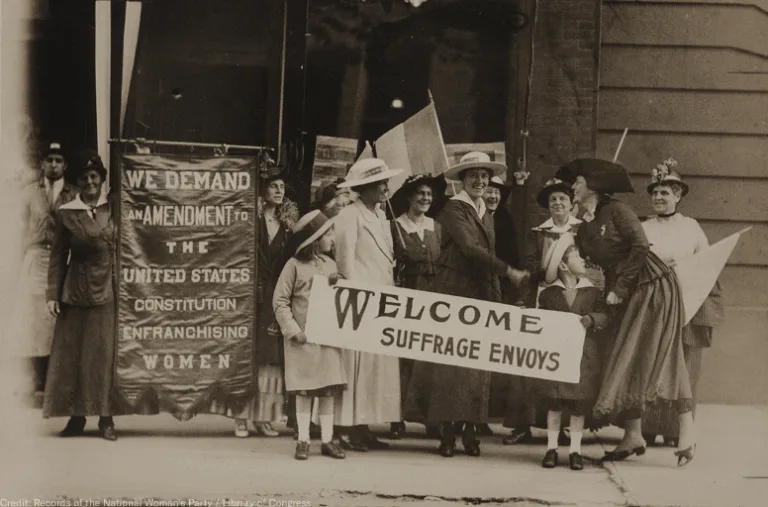How do you respond when you get accused of things? The all-too-common Shaggy Implication isn’t ideal. There’s a better way.
Talking Big Ideas.
“Rumors are only valuable when they are denied.”
~ The Bed of Procrustes
Mitt Romney’s viral comment this week offers a teachable moment for us. To begin, take a second to imagine you’re sitting alone in a waiting room.
A TV on the wall cuts to a loud Breaking News bulletin. There’s a strange guy in a fancy suit standing behind a lectern. He’s surrounded by cameras and giving a statement:
I did not steal all the money from those children . . . these allegations are false!
Be honest. What does your intuition say? My guess is you think he’s probably guilty.
Slightly different situation. It’s 1998, and you know the guy on TV well. He’s the President of the United States. He says:
I did not have sexual relations with that woman, Miss Lewinsky . . . these allegations are false!
Do you believe him?
Or consider this clip of another president. It’s 1973 and the country is more than a year into the Watergate scandal: “I have never profited from public service. . . . I have never obstructed justice. . . . I’m not a crook!”
They just sound guilty.
This is because they repeat negative phrases, which makes it feel like they’re hiding the truth: “I did not . . . I have never . . . I’m not.” When speakers repeat the negative, their audience tends to associate them with the accusation. If you say, “I’m not a crook!” we’ll remember, “You + crook.”
These obstinate denials remind me of an Easter morning as a kid when my brother swore he didn’t eat the black jelly beans. Even though we could all see the evidence dripping down his face. The more he denied it, the more absurd and memorable it became.
I call this lie the Shaggy Denial.
The Shaggy Denial
In 2000, reggae artist Shaggy released the song, It Wasn’t Me, to global acclaim. His catchy track highlights how silly and ineffective it is to deny accountability for one’s actions, particularly in the face of obvious guilt.
The more you look around for Shaggy Denials, the more you’ll see them.
FIFA president Sepp Blatter famously said, “I am not corrupt,” after leading his organization into a massive corruption scandal.
Olympian Marion Jones said, “I have never, ever used performance-enhancing drugs” before admitting to using performance-enhancing drugs. Baseball legend Pete Rose said, “I did not bet on baseball,” after betting on baseball for years.
Lobbyist Paul Manafort said: “I have never received a single ‘off-the-books cash payment,’” after receiving an off-the-books cash payment. Congressman Anthony Weiner brazenly told reporters, “I did not send that photo!” of his penis to a young woman shortly after sending that photo to a young woman.
She said, “I did not marry him for his money.”
Each of them said precisely, specifically, the opposite of the truth:
- I did not send that photo → I sent that photo
- I am not corrupt → I am corrupt.
- I am not a crook → I am a crook.
The lies point us to the truth. Simply remove the negative.
The Shaggy Implication
Which brings us to Mitt Romney.
On a family vacation in 1983, Mitt Romney drove 12 hours with his dog Seamus on top of his car in a windshield-equipped carrier. He has been plagued by this story ever since. Most recently, with news about South Dakota Governor Kristi Noem killing her family dog, Romney’s incident is back in the press.
In talking to the Huffington Post this week, Romney said:
I didn’t eat my dog. I didn’t shoot my dog.
To which the witty social media influencer Shoshana Weissmann replied:
She is absolutely correct. Call it a Shaggy Implication: When we repeat the negative, we sound guilty even when telling the truth.
A school Superintendent in Georgia went viral with this quote: “We do not provide pornography to our students.” Senator Ted Cruz’s wife got countless headlines with her statement, “My husband is not the Zodiac Killer!” And an aspiring politician sank her campaign with a TV ad she began by saying, “I’m not a witch.”
Here’s the lead sentence in an email a friend received from the non-profit James Madison Institute:
Did you know that, contrary to what the others says [sic], The James Madison Institute (JMI) isn’t funded by hundreds of special interest groups or by “dark money”?
They’re all telling the truth – but through Shaggy Implication, they sound just as guilty as Bill Clinton, Richard Nixon, and Anthony Weiner.
This happens every day in media interviews, Congressional testimonies, legal arguments, conversations at networking events, and any other time people are answering tough and emotionally loaded questions.
Consider:
Q: Why do you support policies that hurt poor people?
BAD ANSWER: We don’t support policies that hurt poor people! Honestly, we don’t!
Resist the urge to repeat the negative.
Instead of being defensive and getting emotional, stay calm and state your position positively. And then build your credibility with a concrete example:
Q: Why do you support policies that hurt poor people?
BETTER ANSWER: We support policies that improve the lives of people most in need. In fact, this month, we released a study showing how we can make simple reforms to our licensing laws that will empower the most vulnerable in our state.
Mark Ellis has the most cringe-inducing example I’ve found of failing to follow this advice. During a run for parliament in Australia, he tweeted this:
He lost the election.
Please do not take the Mark Ellis approach. Follow these steps instead:
- Keep calm: Remain in control of your emotions.
- Stay on message: Set the terms of debate in a positive way.
- Give an example: Be specific so you bring your point to life.
In my essay How to Structure What You Say, I walk through five classic templates to help you speak with clarity and eloquence. The steps above are a simple version of The Front Load, a classic way to answer questions and interact during everyday conversations.
Always state your case in the positive. Never repeat the negative or allow emotions to override your logic.
And when you are wrong, be quick to admit it. There’s an honor and beauty in highlighting and correcting our errors. As Shaggy teaches us at the end of It Wasn’t Me, always sincerely apologize and make amends whenever you cause harm.
Otherwise, you may end up in a modern-day Shaggy song of your own:




